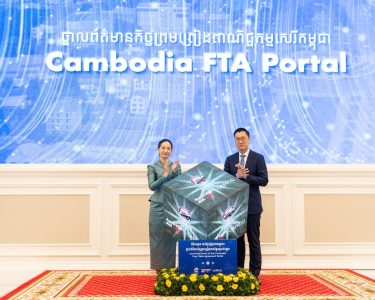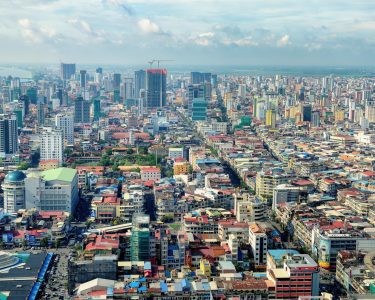Tayseng & Sophorn Pouvchantna
I. Legal and Regulatory Framework for IPR
Cambodia’s IP framework has undergone significant development in recent years to align with international standards and facilitate innovation-driven growth. Cambodia is a signatory to various international treaties and agreements, including the Agreement on Trade-Related Aspects of Intellectual Property Rights (TRIPS).
At the time of Cambodia’s accession to the World Intellectual Property Organization (WIPO) in 1995 and the Paris Convention for the Protection of Industrial Property in 1998, the regulatory framework to protect IP in Cambodia was weak. After the accession, the Cambodian Government has enacted numerous laws and regulations to strengthen the protection of IP rights in order to attract foreign direct investment.
Those laws include the Law Concerning Marks, Trade Names and Acts of Unfair Competition; Law on Copyrights and Related Rights; Law on the Patent, Utility Model Certificates and Industrial Designs; Law on Geographical Indications; Law on the Management of Quality and Safety of Products and Services; Law on Seed Management and Breeder Rights.
II. Registration and Protection of Intellectual Property
The IP rights cover a wide range of areas, including patents, marks, copyrights, industrial designs, geographical indications, and plant variety. While the laws governing these IP rights were adopted, the enforcement mechanisms and procedures are still evolving and each type of IP faces different opportunities and challenges. The following are the type of IP rights which can be registered in Cambodia:
Patents
Patents protect inventions and innovations, granting exclusive rights to the inventor for a specified period. Cambodia’s Patent Law, enacted in 2003, provides protection for inventions that are new, involve an inventive step, and are capable of industrial application. However, the process of obtaining and enforcing patents in Cambodia is complex and lengthy. There is lack of sufficient expertise and human resources to carry out the patent examination at the relevant ministry.
Marks
Trademark and service marks are defined as any visible sign capable of distinguishing the goods (trademark) or services (service mark) of an enterprise. According to this definition, non-visible marks, such as smell, sound, or taste, shall not be registrable. Even though the law is evident, three-dimensional trademark can also be registered as long as they meet the statutory requirements for “distinctiveness.” With the rise of e-commerce and cross-border trade, protecting marks has become crucial for businesses seeking to enter Cambodia’s market.
Copyrights
Copyright protection extends to literary, artistic, and scientific works, including software, music, literature, and architectural designs but exclude all laws, regulations, government circulars, court decisions, and their translations, as well as any idea, formality, method of operation, concept, principle, discovery or mere data, even if expressed, described, explained or embodied in a work. The Cambodia’s Copyright Law also safeguards the rights of creators and encourages creativity and innovation. However, the enforcement of copyright laws has always been a challenge, particularly in the digital sphere, where privacy and unauthorized use are prevalent. The relevant ministries should increase their collaboration and concerted efforts to strengthen the protection of copyright and related rights as well as to combat infringing acts.
Industrial designs
An industrial design may be any composition of lines or colours, or any three-dimensional form, or any material, so long as it gives a special appearance to a product of industry or handicraft. This special appearance must be judged visually; hence non-visual characteristics – such as the smell or touch of a material – are not protected. Like other areas of IP, Industrial design also faces its own challenges. The main challenge is regarding the limited resources, including personnel and expertise within enforcement agencies.
Geographical indication
In Cambodia, Geographical Indication (GI) refers to the name, sign, and/or other distinctive symbols used to designate or represent the geographical origin of goods. These indicators serve to identify products originating from a specific geographical area where the quality, reputation, or other characteristics of the goods are linked to that origin. Although Cambodia may have laws and regulations in place to protect geographical indication, the effectiveness of these instruments in practice may vary, and there could be gaps or inconsistencies in the legal framework.
Plant variety
The Law on Seed Management and Breeder Rights, which came into force in 2008, enables Cambodia to protect newly developed plant varieties. A new plant variety is defined as one recently discovered and developed by plant breeders, and it can be broadly protected for a specific period. However, due to the lack of awareness among plant breeders, farmers, and relevant authorities, this posed as a challenge about the importance and benefits of protecting the plant variety rights.
III. Challenges and Opportunities
Notwithstanding the notable progress regarding the enactment of new IP laws and regulations in Cambodia, we can still see several challenges in practice. Most of the challenges include the lack of resources and capacity for effective enforcement, public awareness, active involvement from the government, and the unstoppable flow of counterfeit goods and piracy.
However, amidst these challenges, opportunities abound for businesses operating in Cambodia’s dynamic market. The country’s young and increasingly affluent population presents a growing consumer base hungry for innovative products and services. By strategically leveraging intellectual property rights, businesses can differentiate themselves in the market, build brand equity, and secure a competitive advantage.
IV. Moving forwards
As Cambodia continues its journey towards economic development and integration into the global economy, the protection of IP rights will play a pivotal role in driving innovation, attracting investment, and fostering sustainable growth. While challenges persist, proactive engagement and collaboration between stakeholders can pave the way for a more robust and effective IP regime in Cambodia. Technology integration could also play an important role and act as a powerful tool to overcome challenges.
Investing in digital solutions such as automation, data analytics and remote collaboration tools can enhance efficiency and resilience. Moreover, collaboration across departments and sectors can also lead to innovative solutions and shared resources between the government institutions to tackle issues effectively. By embracing best practices and seizing opportunities, businesses can harness the full potential of IP to thrive in Cambodia’s dynamic business environment.
Tayseng & Sophorn Pouvchantna are Managing partner and partner at HBS LAW. This article was published in the CamEd Business Review June H1 2024 edition.





